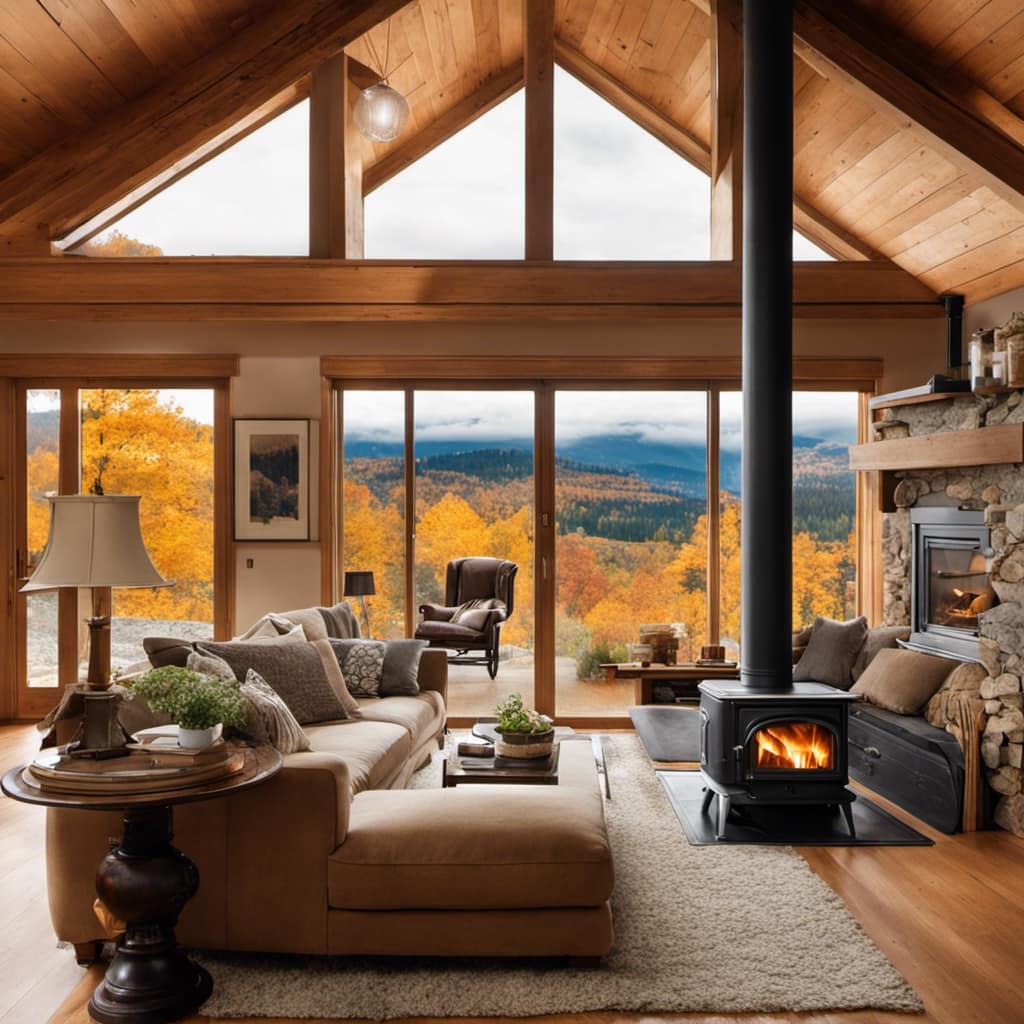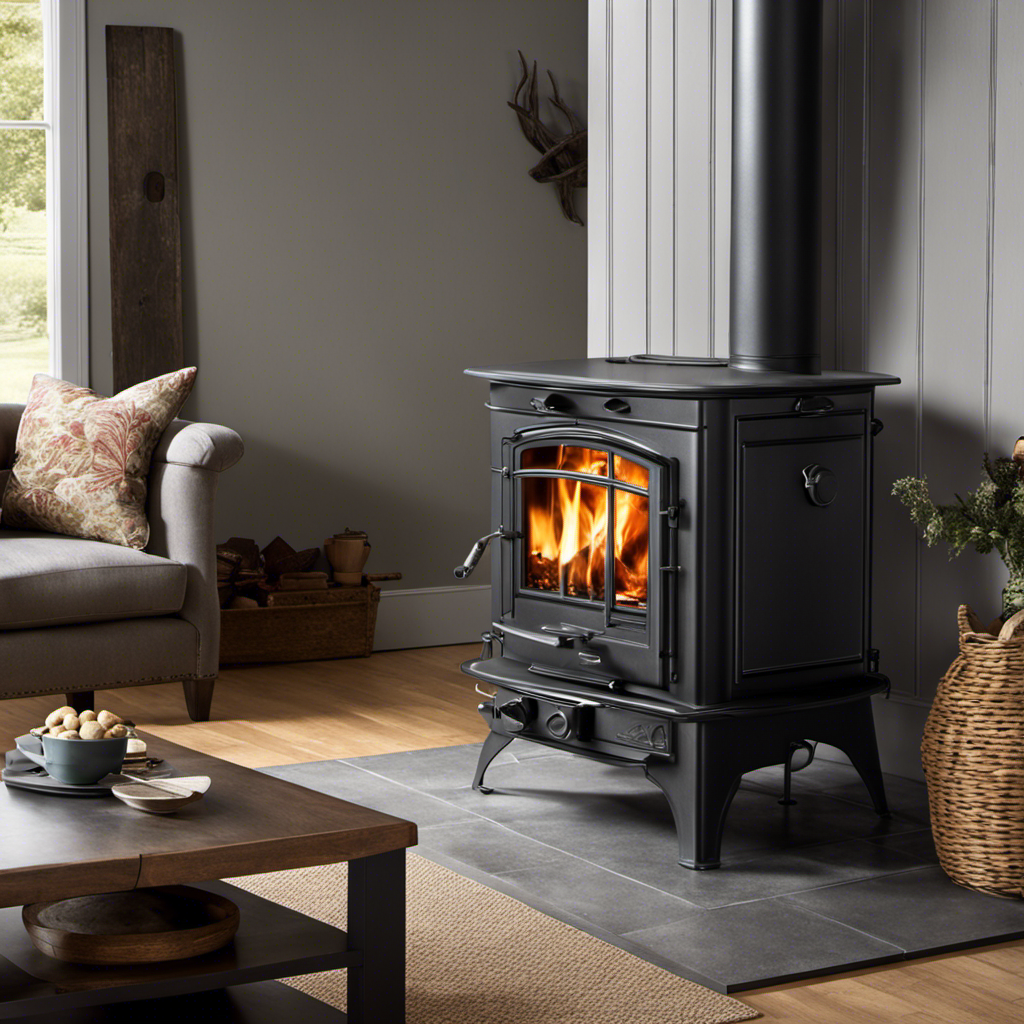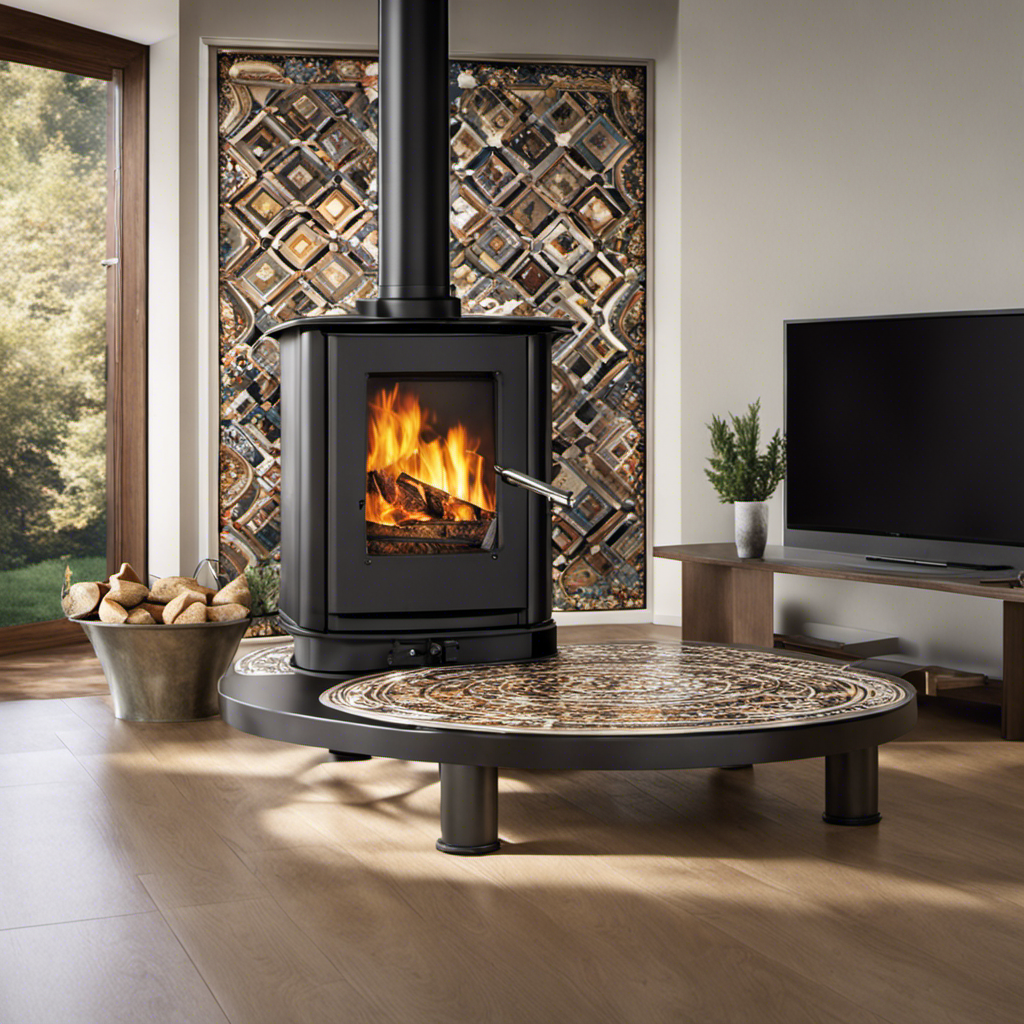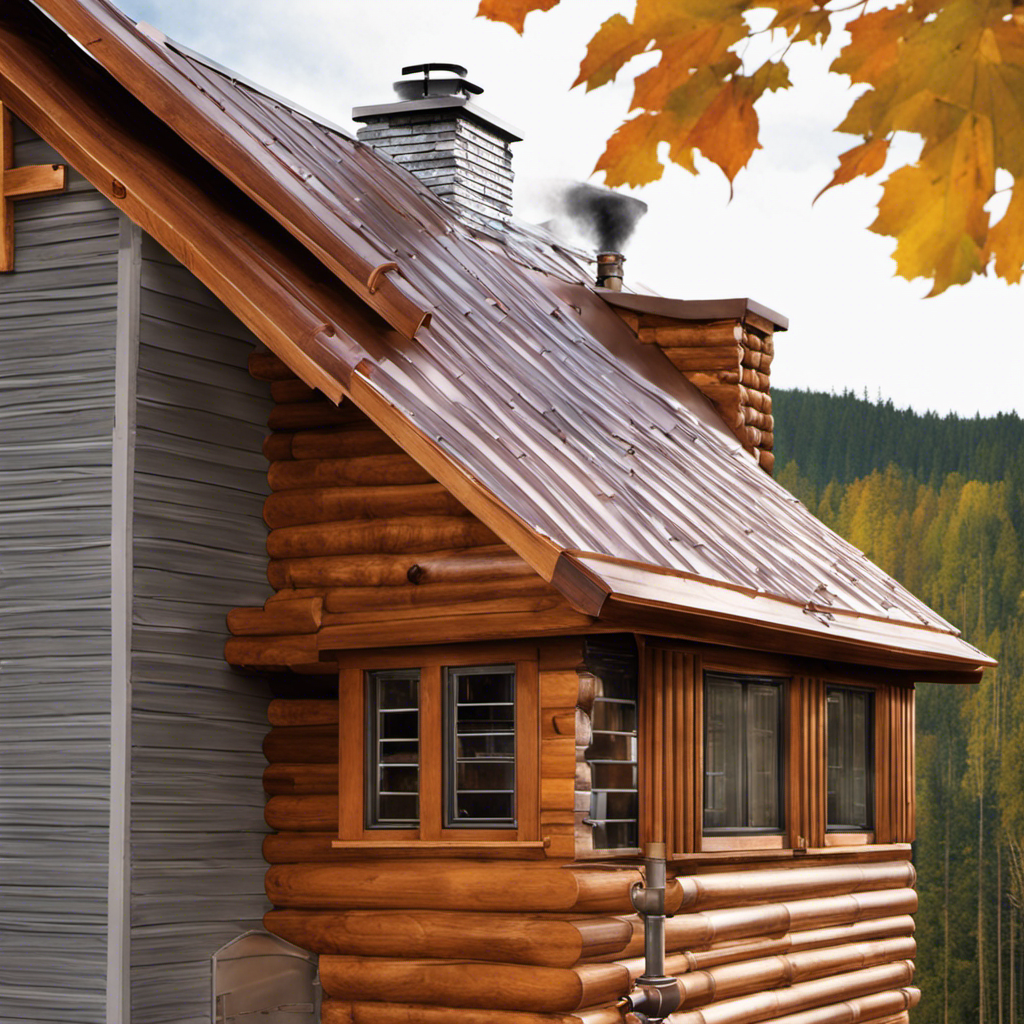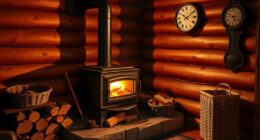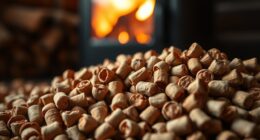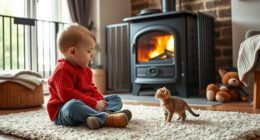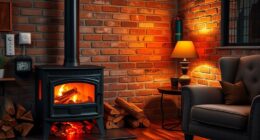
From my own experience with wood stove pipes, I can confirm that they do indeed become very hot.
In this article, I will delve into the fascinating world of wood stove pipes and explore just how hot they can get.
From the factors that influence their heat levels to safety precautions and temperature measurement techniques, this guide will equip you with the knowledge to manage and control the heat of wood stove pipes effectively.
Key Takeaways
- Wood stove pipes can reach scorching temperatures, which can lead to structural damage or fire hazards.
- Factors such as insulation, fuel quality, airflow, and stove design impact the heat levels of wood stove pipes.
- Safety precautions, such as wearing heat resistant gloves and maintaining proper clearance around the pipes, should be followed when dealing with hot wood stove pipes.
- Specialized thermometers designed for high heat environments can be used to measure the temperature of wood stove pipes.
Understanding the Temperature Range of Wood Stove Pipes
I can feel the heat radiating from the wood stove pipes. Understanding the temperature range of wood stove pipes is crucial for ensuring their safe and efficient operation.

Insulated wood stove pipes offer several benefits, including enhanced heat retention and increased safety. By reducing heat loss, insulated pipes help to maximize the heat output of the stove, making it more efficient and reducing the need for constant refueling. Additionally, insulated pipes minimize the risk of overheating, which can lead to structural damage or even fire hazards. Common problems with overheating wood stove pipes include warping, cracking, and discoloration.
It’s important to monitor the temperature of the pipes and take appropriate measures to prevent overheating. Factors such as stove size, pipe length, and clearance to combustible materials can impact the heat levels of wood stove pipes.
Factors That Impact the Heat Levels of Wood Stove Pipes
As a homeowner, I’ve noticed that factors like insulation and fuel quality greatly affect the temperature of my wood stove pipes. It’s important to understand the various factors that can impact the heat levels of wood stove pipes, as it directly affects the efficiency and performance of the stove. Here are four key factors to consider:
-
Insulation: Properly insulating your wood stove pipes can significantly reduce heat loss and ensure that the heat is efficiently transferred to your living space.

-
Fuel quality: The type and quality of fuel used in your wood stove can directly impact the temperature of the pipes. Dry and seasoned hardwoods tend to burn hotter and more efficiently, generating higher temperatures.
-
Airflow: Proper ventilation is crucial for wood stove pipes. Insufficient airflow can lead to lower temperatures as the fire doesn’t receive enough oxygen to burn efficiently.
-
Stove design: The design of the wood stove itself plays a role in temperature regulation. Stoves with efficient combustion systems and well-designed heat exchange systems can help maintain higher temperatures in the pipes.
Understanding these factors and ensuring proper ventilation will help ensure optimal performance and heat levels for your wood stove pipes.

Safety Precautions for Dealing With Hot Wood Stove Pipes
To prevent burns, it’s important to exercise caution when handling the heated wood stove pipes. When dealing with hot pipes, it is crucial to wear heat resistant gloves to protect your hands from the high temperatures. Additionally, it is essential to maintain proper clearance around the pipes to prevent accidental contact with flammable materials. Here is a table outlining the recommended minimum clearance distances for different types of materials:
| Material | Clearance Distance |
|---|---|
| Combustible walls | 18 inches |
| Non-combustible walls | 12 inches |
| Ceiling | 36 inches |
How to Measure the Temperature of Wood Stove Pipes
When measuring the temperature of the pipes, it’s important to use a specialized thermometer designed for high heat environments. These thermometers are specifically calibrated to accurately measure temperatures in extreme conditions, such as those found in wood stove pipes.
Here are some measuring techniques to consider:
-
Direct contact: This method involves physically touching the thermometer to the pipe’s surface to obtain an accurate reading. Ensure the thermometer is in good condition and can withstand the heat.

-
Infrared thermometers: These devices use thermal radiation to measure temperature without direct contact. They’re easy to use and provide quick readings, making them a popular choice.
-
Thermal imaging: This technique utilizes infrared cameras to capture images of the pipe’s surface temperature. It allows for a comprehensive analysis of multiple areas simultaneously.
-
Non-contact pyrometers: These instruments use the principle of measuring the radiation emitted by the pipe to determine its temperature. They’re highly accurate and suitable for high-temperature environments.
Tips for Managing and Controlling the Heat of Wood Stove Pipes
I find it helpful to adjust the air intake on my wood stove to control the heat of the pipes. Properly managing and controlling the heat output of wood stove pipes is essential for maintaining a safe and efficient operation.
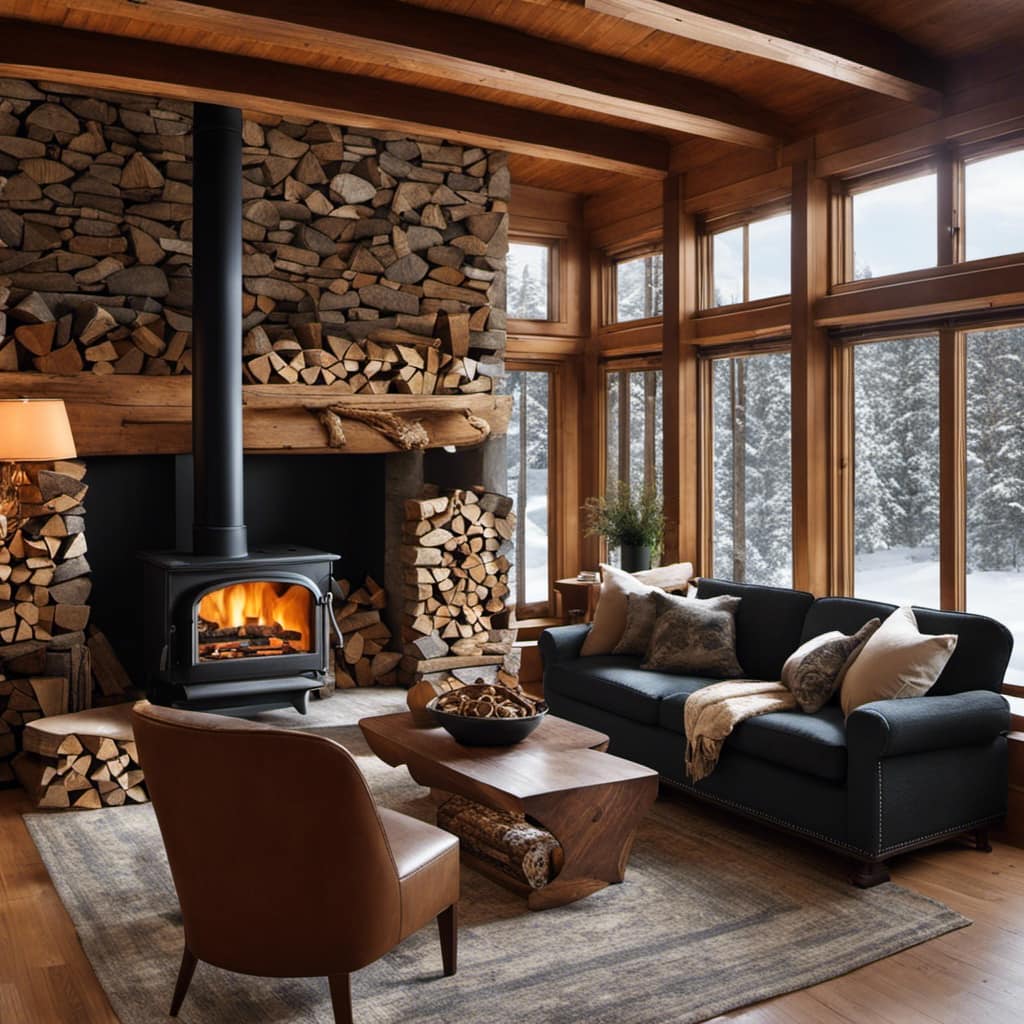
By optimizing airflow, you can ensure that the pipes don’t overheat or become too cool, which can lead to poor combustion and inefficient burning. One way to control the heat output is by adjusting the air intake dampers.
Opening the dampers will increase the airflow, resulting in a hotter fire and hotter pipes. On the other hand, closing the dampers will reduce the airflow and lower the heat output. It’s crucial to find the right balance to maintain a steady and optimal temperature in the pipes while ensuring efficient combustion.
Regularly monitoring the temperature with a stovepipe thermometer can help you fine-tune the airflow and achieve the desired heat output.
Frequently Asked Questions
What Are the Different Materials Used in Wood Stove Pipes and How Do They Affect the Temperature?
Different materials used in wood stove pipes, such as stainless steel, galvanized steel, and cast iron, have their pros and cons. They affect the temperature by conducting heat differently, with stainless steel being the most efficient.
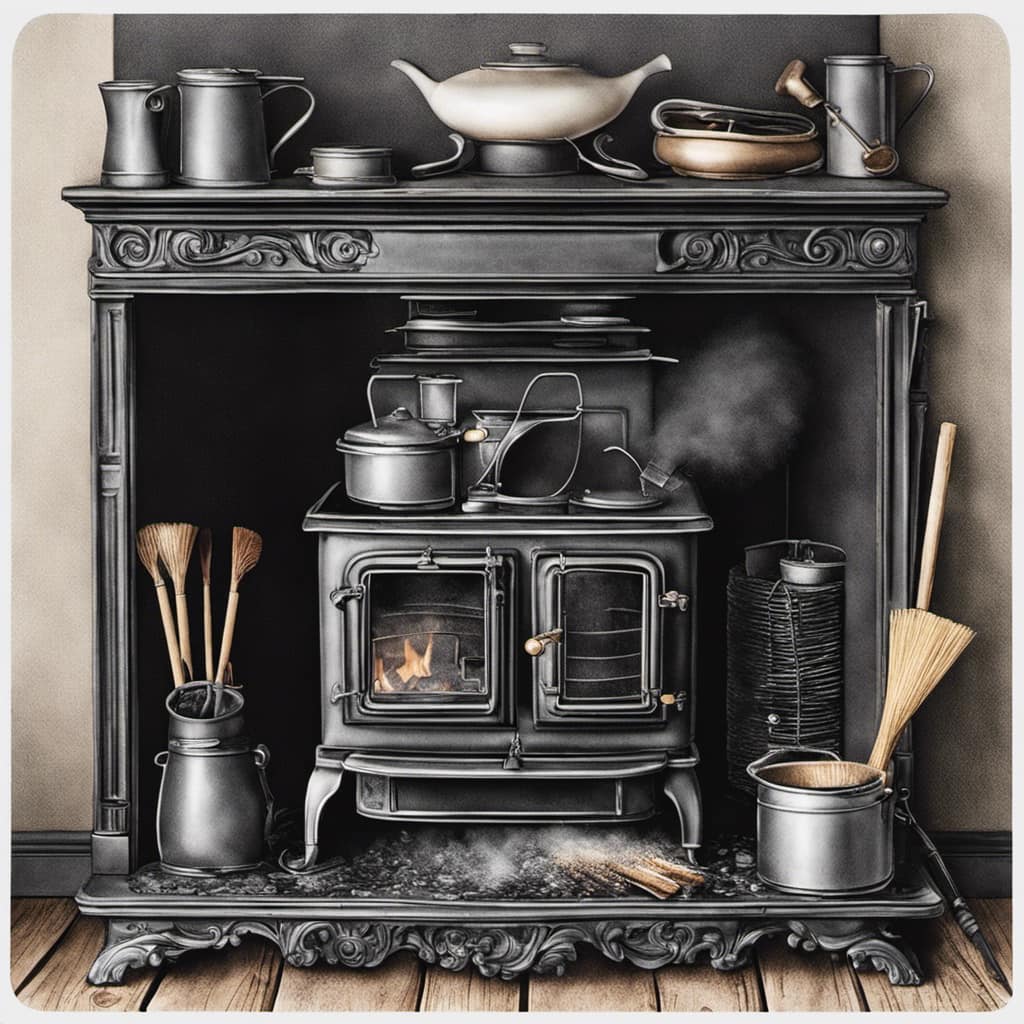
Can the Temperature of Wood Stove Pipes Be Controlled or Adjusted?
Controlling the temperature of wood stove pipes is crucial for a safe and efficient heating experience. With adjustable dampers and airflow control, you can regulate the heat output and maintain a comfortable temperature in your home.
Are There Any Specific Building Codes or Regulations Regarding the Installation of Wood Stove Pipes?
Building codes and regulations for wood stove pipe installation vary by jurisdiction. It is important to consult local authorities or a professional to ensure compliance and safety.
How Often Should Wood Stove Pipes Be Cleaned to Maintain Optimal Performance?
I can tell you from my experience that regular cleaning of wood stove pipes is crucial for optimal performance. It’s important to know how often to clean them to ensure safety and efficiency.
Are There Any Alternative Methods for Heating a Home That Are More Energy-Efficient Than Using Wood Stove Pipes?
Alternative heating methods, such as using solar power, can be more energy-efficient than wood stove pipes. Solar power harnesses the sun’s energy to heat your home, reducing reliance on traditional heating methods and their associated costs and environmental impacts.

Conclusion
In conclusion, understanding the temperature range of wood stove pipes is crucial for ensuring safety and efficient operation.
By considering factors that impact heat levels, implementing necessary safety precautions, and measuring the temperature accurately, one can effectively manage and control the heat of wood stove pipes.
Remember, a well-regulated wood stove pipe produces harmonious heat, heating your home with a cozy crackle.
Stay safe and warm!
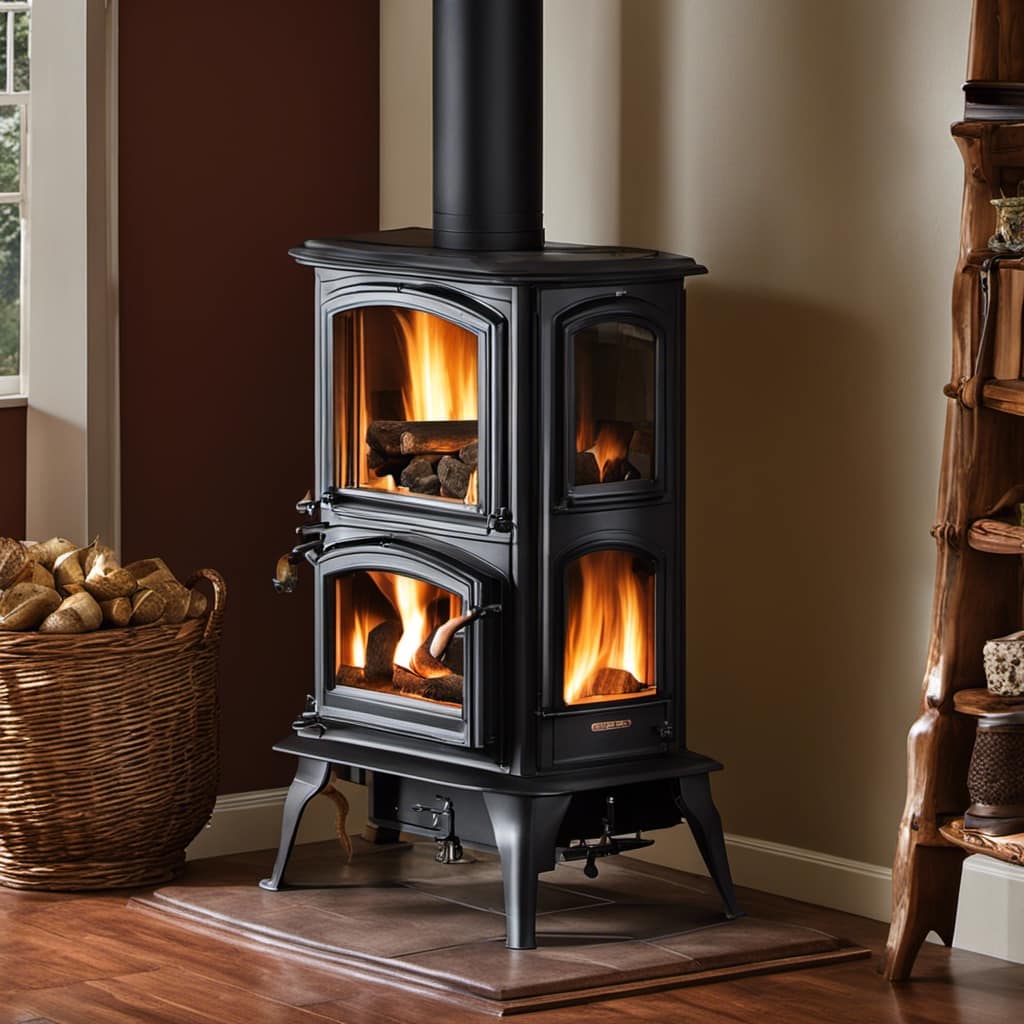
Growing up surrounded by the vast beauty of nature, Sierra was always drawn to the call of the wild. While others sought the comfort of the familiar, she ventured out, embracing the unpredictable and finding stories in the heartbeat of nature.
At the epicenter of every remarkable venture lies a dynamic team—a fusion of diverse talents, visions, and passions. The essence of Best Small Wood Stoves is crafted and refined by such a trio: Sierra, Logan, and Terra. Their collective expertise has transformed the platform into a leading authority on small wood stoves, radiating warmth and knowledge in equal measure.


